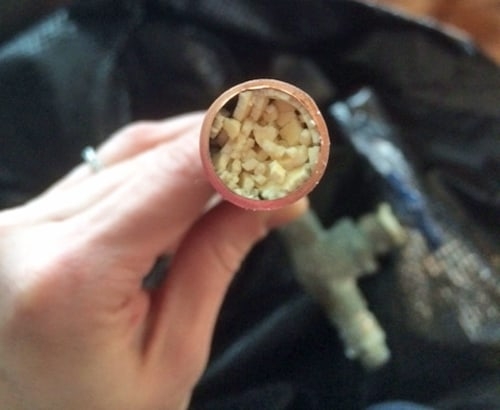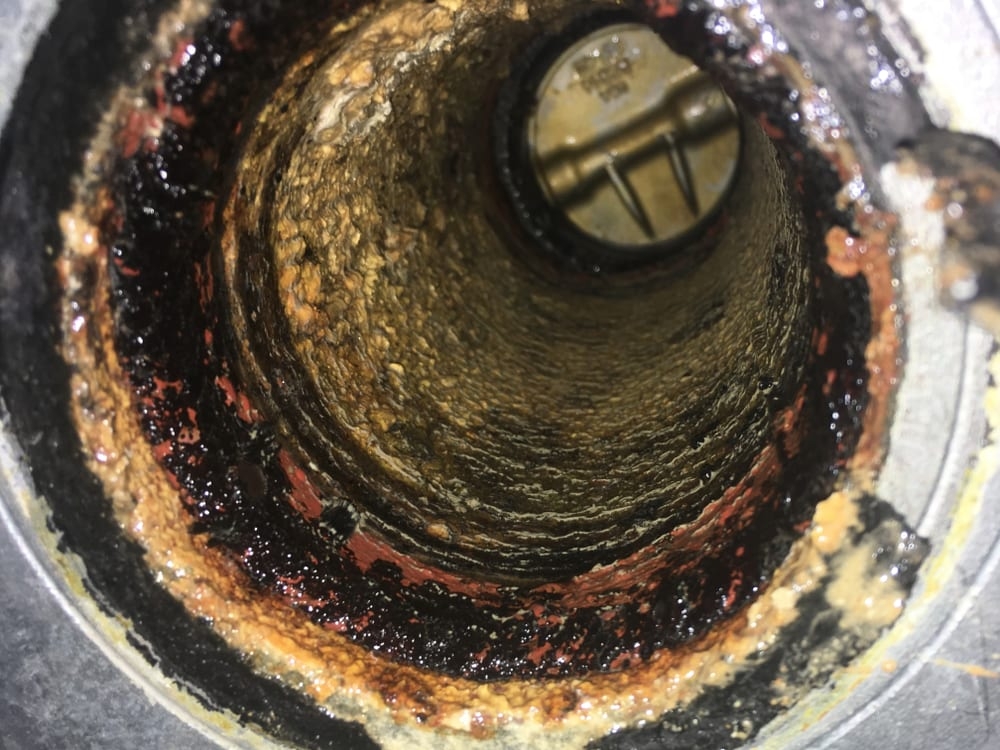Why does calcium buildup on outside of pipe?
Have you ever noticed a white, chalky substance on the outside of your pipes? This is likely due to calcium buildup, which can cause a variety of problems if left untreated. But why does this happen in the first place?
Calcium buildup on the outside of pipes is a common issue that many homeowners face. It can lead to reduced water flow, increased energy costs, and even damage to your plumbing system. Understanding the cause of this buildup is key to preventing and addressing the issue.
Calcium buildup on the outside of pipes is caused by a variety of factors, including hard water, temperature changes, and chemical reactions. In this article, we will explore the science behind this phenomenon and provide tips for preventing and removing calcium buildup from your pipes.
What is Calcium Buildup?
Calcium is a naturally occurring mineral that can be found in the earth’s crust. It is also a common component of tap water and other water sources. Over time, the presence of calcium in water can lead to the buildup of calcium deposits on the outside of pipes and plumbing fixtures. This buildup, often called “hard water scale,” can have negative effects on the flow of water, the appearance of plumbing fixtures, and even the taste of drinking water.

The buildup of calcium deposits on the outside of pipes is a common problem in many households. It can occur in both metal and plastic pipes, and it is often most noticeable in areas with hot water, such as in water heaters and showerheads. The buildup of calcium deposits can lead to restricted water flow and decreased water pressure. It can also make it more difficult for water to heat, leading to increased energy use by water heaters.
In addition to its effects on plumbing systems, the buildup of calcium deposits can also have negative impacts on household appliances and fixtures. White deposits on dishes and shower doors can be difficult to remove, and the buildup of lime scale can lead to skin irritation and other health concerns. Drinking water can also be affected, with some people reporting a bitter taste or other unpleasant flavors.
Fortunately, there are a number of ways to deal with the problem of calcium buildup. One popular solution is to install a water softener, which uses ion exchange to remove calcium and other minerals from water. Another approach is to use chemical products or vinegar baths to dissolve and remove the deposits. Professional plumbers can also provide assistance with more severe cases of buildup in pipes and plumbing systems.
Overall, the buildup of calcium deposits is a common issue that can have negative impacts on household plumbing systems and fixtures. Fortunately, with the right approach, it is possible to address and prevent this problem, ensuring that your water supply remains flowing freely and free of mineral buildup.
Signs of Calcium Buildup
Calcium buildup can occur on various household surfaces, such as pipes, appliances, and fixtures. It forms due to a buildup of mineral deposits that are found in hard water. Hard water is water that contains high levels of minerals such as calcium and magnesium. These minerals attach to surfaces over time, eventually forming a thick and stubborn layer of buildup. But how do you know if you have calcium buildup in your home? Here are some signs to watch out for:
1. Reduced Water Flow: Reduced water flow is one of the most common signs of calcium buildup. The buildup forms on the inner surface of pipes and gradually reduces the flow of water. If you notice that your showerhead or faucet is producing less water than usual, then it’s possible that calcium deposits have formed in your plumbing system.
2. Stains on Surfaces: Calcium buildup can form white or gray stains on faucets, showerheads, and other surfaces. These stains can be difficult to remove and may indicate that you have hard water. The stains can also appear on dishes, glassware, and silverware, leaving them looking dull and less clean.
3. Strange Tastes and Smells: Calcium deposits in your household water can sometimes lead to strange tastes and smells. This is because mineral deposits alter the taste and odor of water. If you notice a bitter or metallic taste in your drinking water, it’s possible that you have calcium buildup in your plumbing system.
4. Poor Performance of Appliances: Appliances that require water, such as washing machines and coffee makers, can also be affected by calcium buildup. The buildup may interfere with the appliance’s performance, causing it to work less efficiently or to break down more frequently.
5. Increased Utility Bills: If you notice that your water and energy bills have increased without any change in your usage habits, it’s possible that calcium buildup is the culprit. This is because the buildup can cause appliances to work harder and less efficiently, leading to higher energy consumption.
Causes of Calcium Buildup On Outside Of Pipes
Calcium buildup is a common plumbing issue that many homeowners face. It occurs when minerals such as calcium and magnesium accumulate on the inside and outside of plumbing pipes over time. While calcium buildup on the inside of pipes can be problematic, buildup on the outside of pipes can also cause several issues. In this article, we will discuss the causes of calcium buildup on the outside of pipes.
One of the leading causes of calcium buildup on the outside of pipes is hard water. Hard water is water that contains high levels of dissolved minerals, particularly calcium and magnesium. When hard water flows through plumbing pipes, it can leave behind mineral deposits on the outside of pipes. These deposits can build up over time and cause pipes to become clogged, leading to decreased water pressure and reduced water flow.
Another cause of calcium buildup on the outside of pipes is the age of the plumbing system. Pipes that are more than 20 years old are more likely to experience calcium buildup due to wear and tear. Over time, the pipes can become corroded, and mineral deposits can accumulate on the exterior of the pipes.
Additionally, if the water supply in your area is high in minerals, it can increase the rate of calcium buildup on your plumbing system. Areas with hard water sources, such as well water, are more likely to experience calcium buildup.
Lastly, if the water in your home is not properly treated, it can contribute to calcium buildup on the outside of pipes. Water that is not pH balanced or treated with water softeners can lead to a buildup of minerals on both the interior and exterior of pipes.
Prevention Strategies for Calcium Buildup On Outside Of Pipes
Calcium buildup on the outside of pipes is a common issue that can lead to various plumbing problems. Fortunately, there are several prevention strategies that homeowners can implement to prevent or minimize calcium buildup on their plumbing systems. Here are some tips to keep your pipes free from mineral deposits:

1. Install a Water Softener System
One of the most effective ways to prevent or inhibit calcium buildup on the outside of pipes is by installing a water softener system. Water softeners use ion exchange to remove hard minerals (such as calcium and magnesium) from the water, preventing them from accumulating on plumbing pipes. By using a water softener, you can also extend the lifespan of your plumbing system and reduce energy consumption of water heaters and other appliances that use hot water.
2. Use White Vinegar as a Cleaning Agent
Another way to prevent calcium buildup on the outside of pipes is by using white vinegar. Vinegar contains acetic acid, which can dissolve mineral deposits and clean the interior and exterior of pipes. To use vinegar as a cleaning agent, you can create a vinegar bath by pouring a cup of white vinegar in a pot of water and boiling it. Once the solution cools down, you can pour it down your drain or flush it through your plumbing system to remove any mineral deposits.
3. Replace Old Plumbing Pipes
If your plumbing system is more than 20 years old, it may be time to replace your old pipes. Old pipes are more prone to corrosion, and the sediment buildup can accumulate on the outside of the pipes. If you’re experiencing frequent plumbing problems such as leaks or reduced water pressure, it may be a sign that your pipes are due for replacement.
4. Regular Maintenance and Cleaning
Regular maintenance and cleaning of your plumbing system can also prevent calcium buildup on the outside of pipes. You can use chemical products or home remedies such as baking soda to remove mineral deposits from your plumbing fixtures and shower drains. Professional plumbers can also provide regular maintenance checkups to ensure that your plumbing system is working efficiently and free from any clogs.
Meet Lila Robinson, an expert in the world of plumbing with a talent for delivering valuable insights and captivating articles on an array of plumbing topics. With years of experience handling complicated plumbing issues, Lila has become a go-to resource for homeowners and businesses alike.
Packing vast knowledge in plumbing tools and science, Lila creates a sense of community on her blog and social media accounts, engaging with readers from all walks of life. Her writing style is authentic, unique, and engaging, and she has an exceptional ability to break complex concepts into understandable ideas.
If you have encountered a plumbing issue, chances are Lila Robinson has conquered it. Her articles uncover the underlying problems behind some of the most unexpected plumbing problems, from tankless water heater error codes to drain snakes in vents.
Whether you’re a beginner or an experienced plumber, Lila Robinson’s blog has something for you. Follow her social media accounts to keep up-to-date with the latest posts and join the conversation.